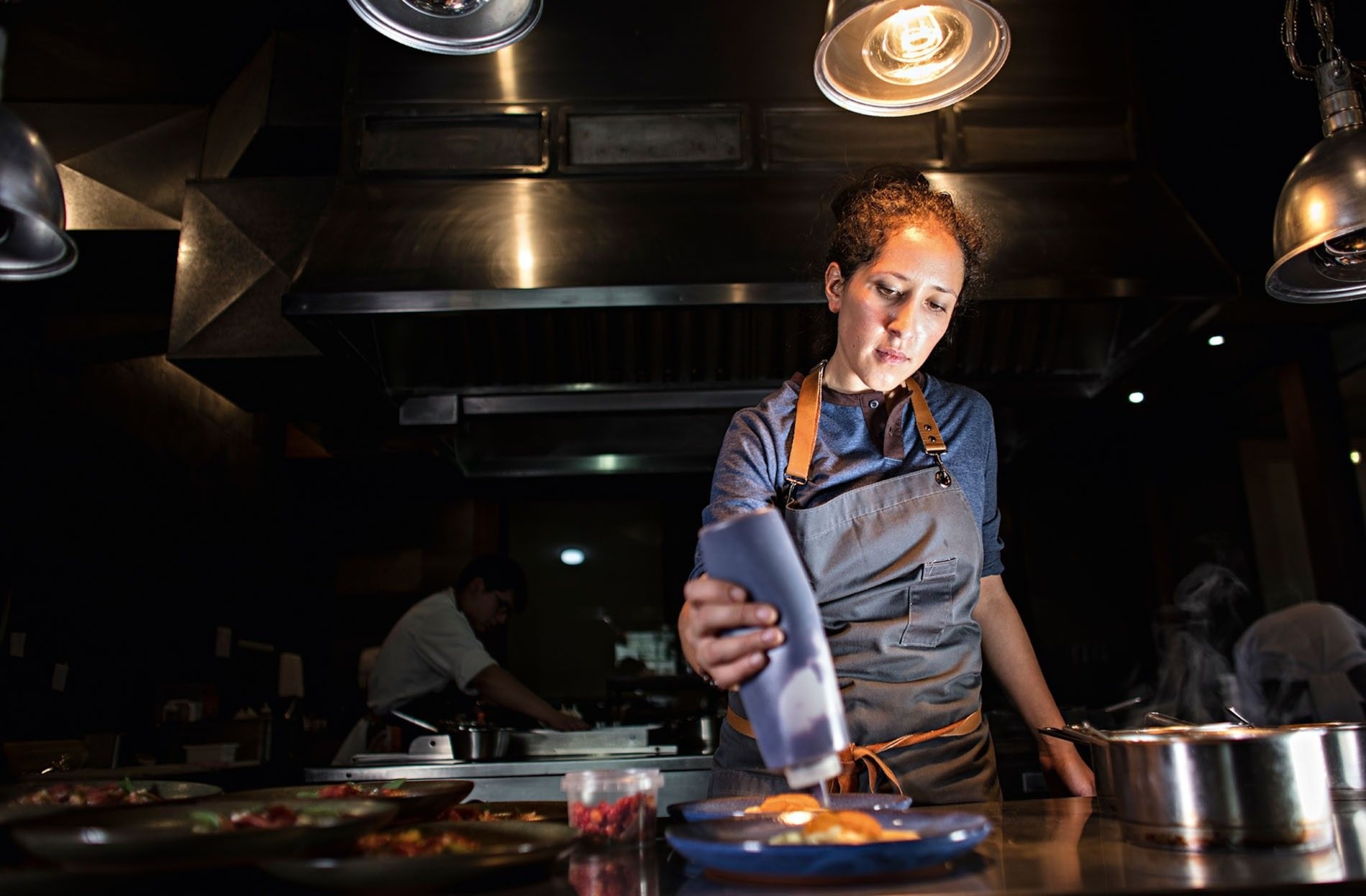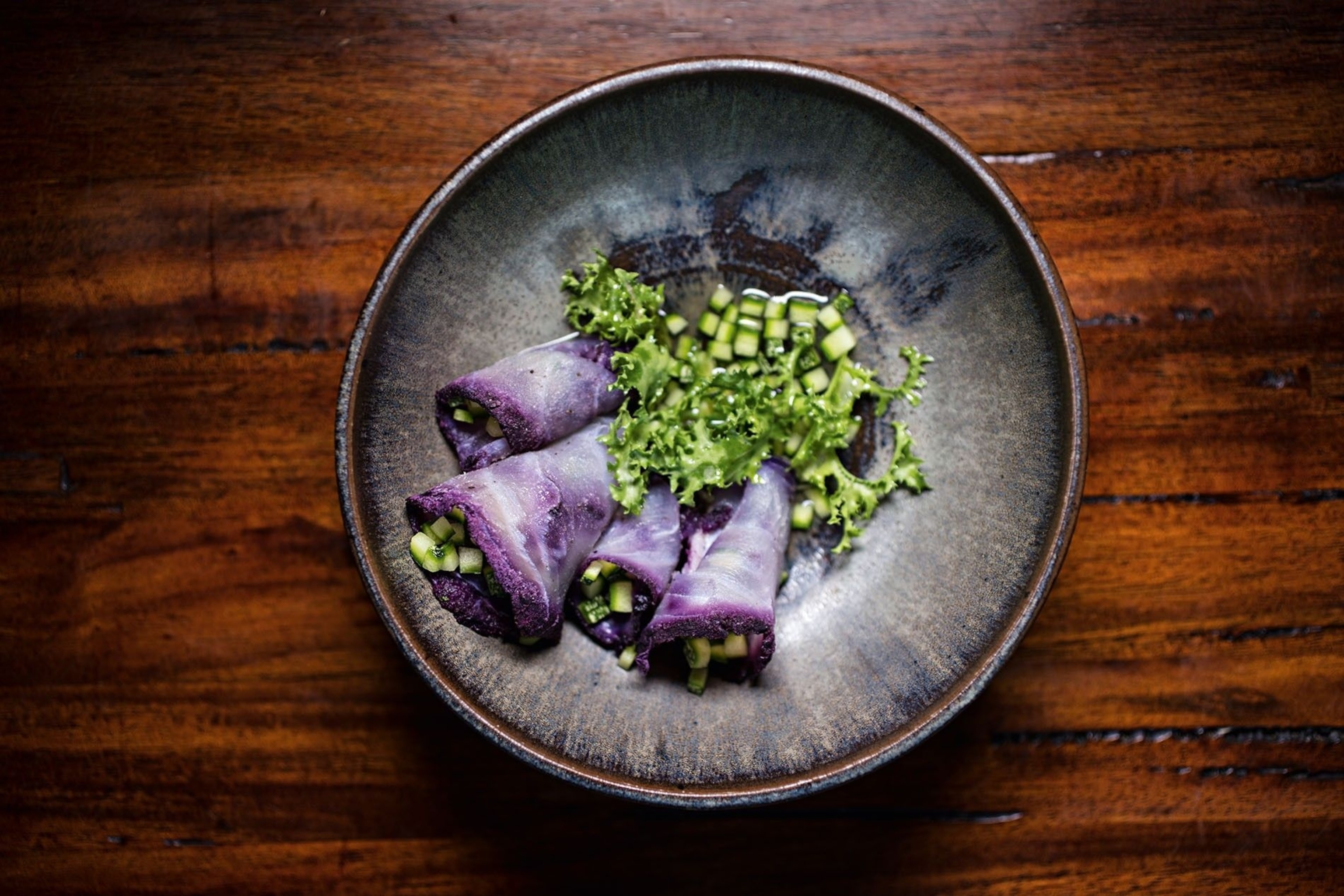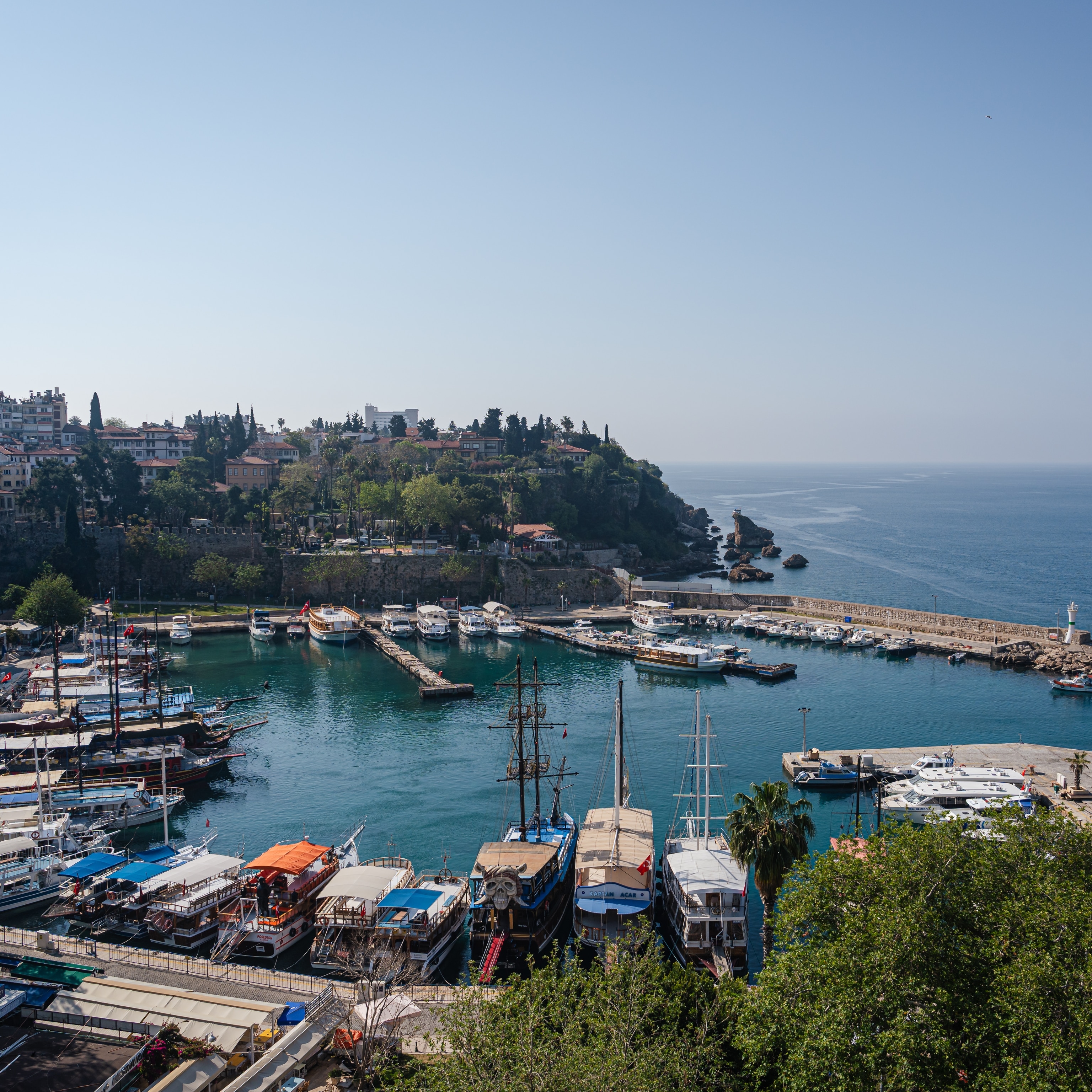
The pioneer: Marsia Taha on bringing traditional, local cooking back from the brink of extinction
Discover how Bolivian chef Marsia Taha is reviving ancestral flavors and spotlighting indigenous cuisine in modern kitchens.
Until relatively recently, you’d never have found the words ‘Bolivia’ and ‘haute cuisine’ in the same sentence. But in 2013, when Claus Meyer (of two-Michelin-starred Noma) and his Melting Pot foundation opened Gustu, the country finally had a taste of gourmet success. A year after opening, the La Paz restaurant — serving 100% native Bolivian produce and designed to help local chefs progress in the industry — became the first Bolivian restaurant to feature on the Latin America’s 50 Best Restaurants list, appearing alongside major players such as Lima’s Central and Mexico City’s Pujol.
Gustu cemented its reputation as a star on the culinary scene when, in 2017, Marsia Taha was named head chef — a notable achievement in a male-dominated industry. Not only was she one of the few Bolivian women to be in charge of a top professional kitchen, she was also the first to head up an internationally acclaimed one.
“The Bolivian woman has always been the feeder,” Marsia says. “She’s in command of our markets, our soup kitchens and our street food stalls, which are the pillars of Bolivian cuisine. But look towards the larger professional kitchens, and the men suddenly become much more in charge than the women.”
Challenging gender stereotypes wasn’t Marsia’s only undertaking. Since becoming head chef, she’s partnered with the Wildlife Conservation Society — an NGO dedicated to protecting Bolivia’s unique ecosystems and species — in an effort to revive endangered ingredients and culinary traditions. In a first-of-its-kind project, named Sabores Silvestres (‘wild flavours’), Marsia and her kitchen team travelled to remote eco-regions, including the Amazon, the Andes and the Altiplano, to learn about their unique flavours.
“For decades, we’ve been ignoring Bolivian produce and turning to imported products,” Marsia says. “But Bolivia is a country of infinite wealth. All we need as Bolivians is to start looking inwards with respect and pride, towards our deep and productive homeland.”
And look inwards she has. Her latest menu, now exclusively made up of native produce, features hard-to-find ingredients such as tuyu tuyu (beetle larvae), cangrejito de Tarija (small freshwater crab from Tarija, a city in southern Bolivia), and lagarto curado (raw alligator), all of which have been responsibly sourced from rural communities across the country.
“We [Bolivians] have swapped our traditional eating habits for the fast, processed and less healthy ingredients of the West,” Marsia says. “The sad thing is that this phenomenon is affecting our hard-working agricultural communities, and thousands of native Bolivian products are at risk [of disappearing].”

In many cases, Marsia tells me, the producers themselves are unaware of the value of their own product. Take, for example, the raw alligator meat she uses in one of Gustu’s signature dishes, which is cured for three days with an acidic Amazonian flower and served alongside diced Andean cucumber. The dish was added to the menu to make use of what was essentially an unwanted byproduct of the Amazon’s alligator leather market.
“Amazonian communities export alligator skin to Europe to make their living,” Marsia explains. “But, as the meat was no longer popular, it was just going to waste.
“If we support and consume local products, we’re not only supporting the entire productive chain of our country, we’re helping to maintain our gastronomic identity,” she adds.
On a trip to Bolivia’s Southern Highlands, the Gustu team and the Wildlife Conservation Society identified dozens of other potential ingredients that could be adopted by chefs and local home cooks, including edible algae such as murmunta; flavoursome herbs and plants like rica-rica and chachacoma; and protein-rich grains like royal quinoa. It’s a discovery that could not only supplement Bolivian farmers’ incomes, but also lower the environmental impact of exportation and reduce the reliance on processed sugar and fat in diets.
After graduating from culinary school in La Paz, Marsia spent much of her early career in Europe, training at Geist and Michelin-starred Studio in Copenhagen. Yet despite her European restaurant experience, Marsia has turned to ancestral Bolivian cooking techniques for inspiration.
“We’re not a traditional Bolivian restaurant,” Marsia says. “But everything we do is inspired by a strong sense of identity.”
A recent dish of filete de paiche (filleted Amazonian river fish), for example, was cooked inside bamboo — a centuries-old Amazonian style of cooking Marsia learnt during a Sabores Silvestres trip to Madidi National Park, in northern Bolivia’s upper Amazon river basin. Gustu has also incorporated a huatia — a traditional Andean earth oven that cooks food underground — into its kitchen.
“These are ancient techniques, but we’re losing them,” Marsia says. “It’s our role as chefs to tell their story and make them a source of pride.”
It was this yearning to share an untold culinary story that encouraged Marsia to return to her homeland. When Gustu first opened, Marsia worked as a kitchen assistant under the guidance of Meyer and Kamilla Seidler (awarded the title of Latin America’s Best Female Chef 2016 by Latin America’s 50 Best Restaurants). Now, she hopes to encourage other Bolivian chefs to use food as a tool for social change. “The Gustu team not only offer delicious food, they seek to generate a positive impact on our community based on a deep understanding and respect for the products of our land,” she explains.
So what’s next for Marsia? Is she hoping for a Michelin star for Gustu? Perhaps unusually for an emerging chef, she isn’t focused on awards. “International rankings are important, but it’s always more important to be clear about your own identity,” she says. Instead, Marsia is set to continue with her mission to improve Bolivia’s socio-economic situation — something she believes can be achieved through a sustainable gastronomy project.
“Right now, Gustu has a very ambitious goal: to promote an anthropological, cultural and historical revaluation of native Bolivian products,” she says. We want to work with more indigenous communities, offer them a stable source of income and rescue more endangered ingredients and cooking techniques.”
Published in the March 2020 issue of National Geographic Traveller Food
Find us on social media
Facebook | Instagram | Twitter







